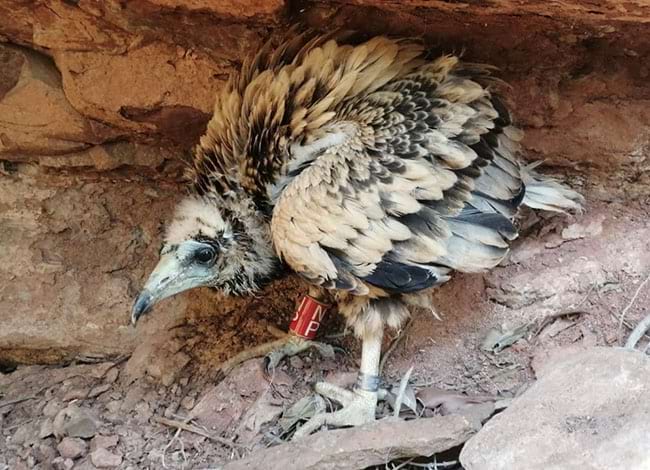07-08-2024
The monitoring of Egyptian vultures in Montseny and Sant Llorenç shows a growth in the population in Central and Eastern Catalonia
As part of the monitoring of the Egyptian vulture (Neophron percnopterus) populations in Catalonia carried out by the Conservation Biology Team of the Faculty of Biology and IRBIO of the University of Barcelona, on July 10 and 11 the aufrany lice from the Natural Park and Biosphere Reserve of Montseny and the Natural Park of Sant Llorenç del Munt i l'Obac. Monitoring has made it possible to know that the population of goshawks in Central and Eastern Catalonia is growing, while this bird of prey is in a clear population decline in the Iberian Peninsula.
The research tasks consist of monitoring the occupied territories, reproduction, and ringing and taking samples of the lice in order to know their state of health and diet, as well as their movements and survival. Other results obtained show that, among others, they consume resources from landfills as well as offal from extensive livestock farming.
The pair of Egyptian vultures in the Natural Park and Biosphere Reserve of Montseny was detected this spring as part of the forest raptor monitoring program that is developed in the Network of Natural Parks of the Provincial Council of Barcelona, within the agreement of collaboration with the Catalan Institute of Ornithology (ICO). On July 10, both chicks were ringed, when they were between 40 and 50 days old, and biometric data was taken from both specimens. The remains present in the nest were also collected to identify the species on which they feed.
In the Natural Park of Sant Llorenç del Munt i l'Obac, this season, the pair of vultures made a nest in a new location and had a louse. It was located thanks to the joint work of the Conservation Biology Team and the Park's rangers. On July 11, the louse was ringed, with a similar age to that of the Montseny louse. Biometric data were also taken and the remains of prey present in the nest were collected to learn about the evolution of their diet over the years.
The research tasks are carried out within the framework of the project of the Ministry of Science and Innovation "Carronyaires i economia circular" and which is supported by the Network of Natural Parks of the Diputació de Barcelona, the Mountain Support Group of the Rural Agents , the Catalan Institute of Ornithology and the General Directorate of Environmental Policies and the Natural Environment of the Generalitat of Catalonia.
